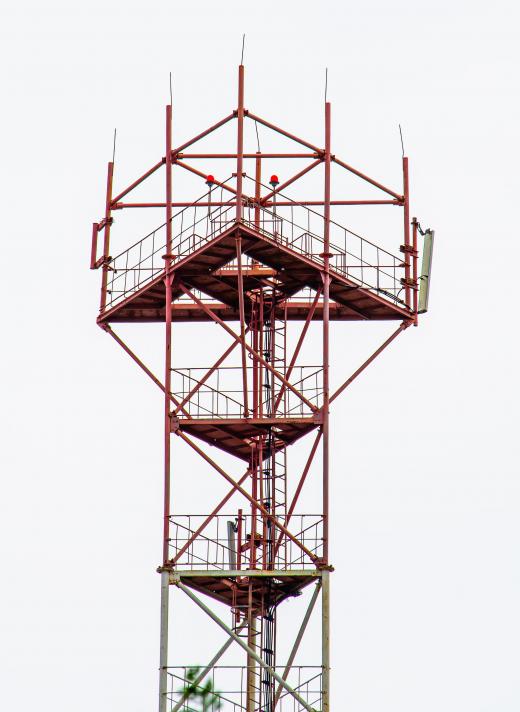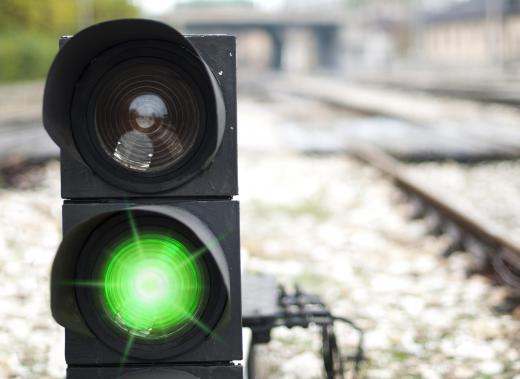A signal tower is a device that can receive and remit signal information for many different purposes. Signal towers are an ancient communications device, dating back to the use of fire or smoke as a means of passing a message. Today, signal towers are used in nearly all forms of communication, from radio and TV transmission towers to cellular phone signal towers.
Early signal towers were understandably low-technology means of communication. The Great Wall of China had a network of high towers where news of attacks or raids could be passed down the wall by means of lighting a signal fire. During the Roman occupation of Britannia around the second century, heavily fortified signal towers were incorporated into the construction of Hadrian's Wall. Early lighthouses were signal towers for ships at sea, using a light angled through a refracting mirror to alert skippers of approaching land, reef, or rocks. These early forms of signal tower are often referred to as optical telegraph towers.

Railroads have also long used signal towers to alert drivers about changes or problems on the rails ahead. Acting as a sort of railroad traffic device, these towers are elevated to be at a highly visible location for oncoming trains. Older railroad signal towers had human operators that would use flag semaphores to pass information to locomotives. Today, most railroad signal towers are automated and use a traffic light system.

With the development of radio wave technology came the invention of the radio signal tower, a high, lightweight structure that has antennas to receive and transmit radio signals. The great signal towers of the 20th century, radio towers reach dizzying heights and are instrumental in the transmission of radio signals, including television signals. The tallest radio signal tower in the world is the KVLY TV Mast in North Dakota, which reaches 2063 ft (628.8 m).

Cellular signal towers are modified radio towers that create cell phone networks. Many cell towers are actually mounted on skyscrapers to give them additional range. Common features of a cell tower include antennas, signal transmitters, and global-positioning devices. With extensive upgrades to cell phone technology placing more demands on transmission capabilities, many old towers are being torn down and replaced by new models that offer better range and higher power.
Signal towers, while infinitely useful, can still be plagued by a variety of problems. The towers, while enormous, are often built from lightweight material out of necessity, leaving the tower vulnerable to high winds and collapse. In densely populated areas, finding places for new signal towers may be difficult, causing a reduction in transmission range and power. Areas with complicated topography may also create signal tower issues, as the tower may not be high enough to avoid running into natural signal blocks, such as mountains.

